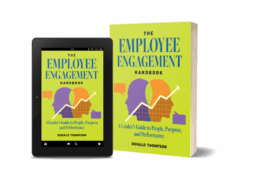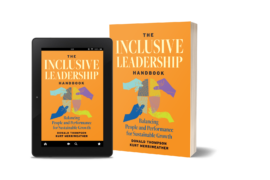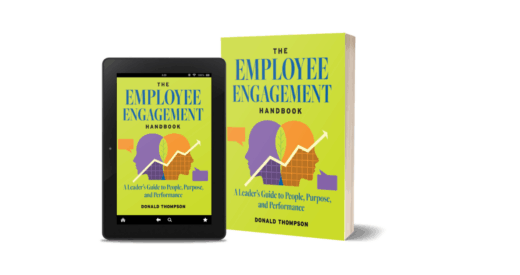Employee-led groups should be a cornerstone of any organization’s employee engagement strategy. A proven way to increase workplace belonging and retention, employee resource groups (ERGs) also drive business outcomes, helping organizations expand their market reach and innovate new products.
Often included in diversity, equity, and inclusion (DEI) strategies, ERGs have such a powerful impact on the bottom line that top companies are continuing to invest in employee groups, even as their DEI programs face scrutiny. For example, Toyota recently scaled back several workplace diversity programs but affirmed its support of its Business Partnering Groups (BPGs), which it describes as fostering an “inclusive environment where diversity of thought can flourish.”

ERGs promote employee engagement, strengthen workplace culture, and provide crucial insights that drive business innovation. And, at the heart of every high-functioning ERG is an engaged and committed executive sponsor.
How does an active executive sponsor help ERGs be successful?
These sponsors, typically members of the executive team, act as advocates for both the ERG and the broader DEI initiatives within an organization. More than symbolic figures, they provide strategic guidance, advocate for funding or resources, and act as a vital link between ERG members and senior leadership. Without a dedicated advocate in leadership, ERGs can struggle to gain traction and achieve their objectives.
“An executive sponsor can amplify who you are, what you’re doing, and any events that the ERG is having. They are a throughline to the rest of the executive team and any teams that they lead,” says Susie Silver, Director of Client Success for The Diversity Movement, a Workplace Options company.
Ashley Estes, Head of Diversity, Equity, Inclusion, and Belonging at Subaru of America, notes that executive sponsors play a pivotal role in driving ERG participation. Promoting the business value and importance of ERGs is especially crucial in organizations that are new to employee-led groups.
Our executives promote the ERGs as really, really important for our workplace culture,” she says. “If you start that way, people will associate the ERGs as legitimate, and they’re not just interest groups that put on events. There’s so much more to it, and the executive teams value those who step up to be leaders of these ERGs.
How to be an Effective Executive Sponsor

Selecting an executive sponsor typically involves input from the DEI Council, the ERG committee, and the group’s previous executive sponsor. The individual should have a genuine passion for the ERG’s mission, even if they don’t have a direct connection to the community. A well-matched sponsor fosters authentic relationships with ERG members, making advocacy more meaningful. An effective sponsor should also have enough influence within the company to secure resources and break down barriers that might hinder ERG progress.
The individual should also be able to commit to the responsibilities of the role, which often include the following duties:
- Ensure the group’s activities remain aligned with company priorities and monitor the revenue impact. Data points like retention numbers, promotion rates, and innovation outcomes should be measured and tracked.
- Support ERG initiatives. For example, the executive sponsor could help the ERG secure funding and/or encourage other executives to participate in ERG-sponsored activities.
- Help ERG members break down organizational barriers and foster cross-departmental collaboration
- Hold the ERG accountable for progress toward goals
- Raise the visibility of the ERG across the company and among executive leadership
- Provide informal coaching and mentorship to the ERG leader and its members
- Attend ERG meetings
- Serve for a specific term and assist in identifying their successor
How does sponsoring an ERG help the executive leader?

Beyond supporting ERGs, executive sponsorship creates a ripple effect across the company. When an organization’s executive team lacks the element of diversity that an employee-led group represents, having a strong ally in leadership can send an emphatic message about the company’s commitment to equity and inclusion. In addition, being exposed to different perspectives can help sponsors grow personally and professionally.
As executive sponsor of his company’s Pride employee resource group Dan Martin, Vice President of Marketing at DHI Group, was able to gain buy-in from the executive team and help the employee-led group achieve several of its goals. But Martin’s most significant takeaway is what he learned from the Pride Impact Group members.
Learning the obstacles individuals are facing just at work was staggering, not to mention what they are experiencing in their personal lives,” he says. “The members of the LGBTQIA+ community have taught me so much, and to have the chance to give something – anything – back to them is a responsibility I don’t take lightly.
Executive sponsors play an essential role in the success of employee resource groups. Their engagement helps drive membership, ensures strategic alignment, and provides ERGs with the support needed to break down organizational barriers. In return, businesses benefit from a more engaged workforce, stronger leadership pipelines, and a company culture that attracts and retains top talent.
For organizations looking to build or strengthen their ERG programs, encouraging active executive sponsorship is a best practice and a business imperative.
Download The Employee Resource Group Toolkit for more ERG best practices that can help your organization maintain employee-led groups, drive organizational objectives, and help cultivate a more inclusive workplace. ERG experts and business leaders offer practical insights during our Employee Resource Group (ERG) Summit, available now on demand.
Amber Keister is a Content Strategist at The Diversity Movement. She has spent more than 20 years as a journalist for publications throughout the South. Connect with her on Linkedin.




